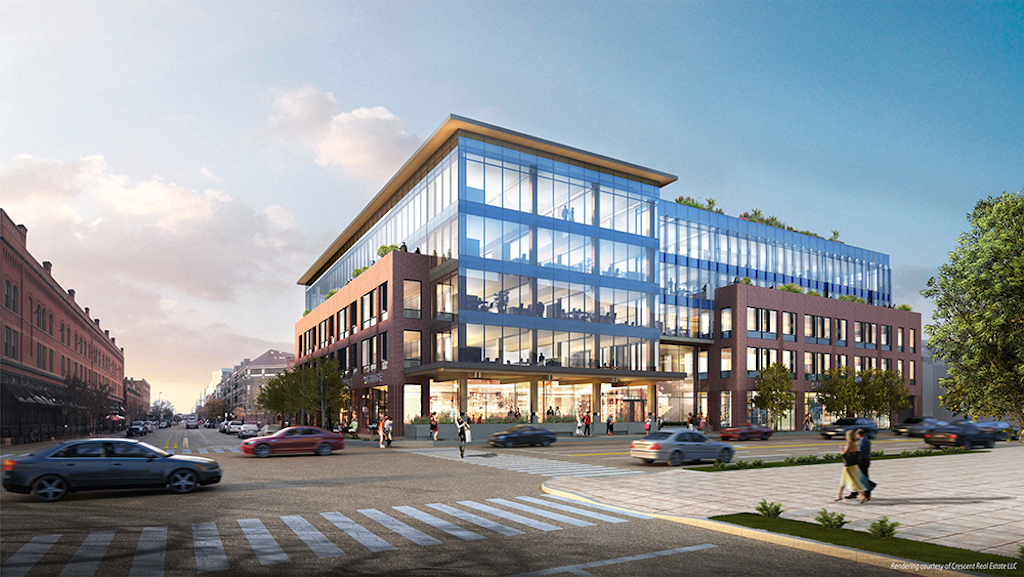By Julie Edwards, OZ Architecture
These days, sustainability is on peoples’ minds. How can we use less water? How can we reduce our carbon footprint? How can we cut down on waste? These types of questions are becoming more important for architects and designers when approaching clients about sustainability efforts. In fact, a 2010 survey by CoreNet Global and Jones Lang LaSalle suggested that 23 percent of corporate real estate decision-makers believed sustainability was a “major factor” in lease decisions, and an additional 18 percent called it a “tie-breaker” between buildings of equal price and quality.
When delving into the sustainability goal-setting process with your clients, architects and designers may find more success by using a step-by-step method. Starting by educating the client, before making the case for why sustainability matters. Finally, help to set and prioritize project goals that match client values and establish metrics in order to track project success. Here’s a bit more about each step, with tips for implementing each in your future sustainability initiatives.
Educate Yourself, Then the Client
Before you approach a client about implementing a sustainability plan for their project, start with educating yourself. Do some research to understand the site, the project, and whatever you can learn about the client’s knowledge level and sustainability commitment. Use the information you gather to determine a plan for approaching the conversation.
Be sure to take some time to understand where the client is coming from. Assess their knowledge about basic sustainability terms and targets; after all, it will be tough to jump right in with setting an energy use intensity target if the client doesn’t know what that means. Consider assembling a “sustainability 101” presentation to cover the basics of what sustainability is and what it involves — touching on subjects of energy conservation, water conservation, location of the site and transportation options surrounding it, as well as materials planned for the building.
Other clients may already have a solid introduction to sustainability, or already have ambitious sustainability goals such as net zero energy targets, they won’t need the same level of education. The important thing to remember is that every project is unique, so you must be prepared to come up with a unique solution.
Make the Case for Sustainability
Now that you have a solid understanding of your client’s knowledge base coming into the project, you can make the case for sustainability. This is the time to relay the benefits of sustainable design and development from an environmental standpoint. Take into account what the client already knows about sustainability, then consider the benefits for both short and long-term clients.
Short-term clients — those who don’t plan to hold the building for long — are likely more interested in resale value and competitive edge. Lean into the case for how sustainable components can lead to energy savings for future holders and renters. A 2015 study from Bentall Kenney shows that, in the U.S., properties with a LEED certification see an average 3.7 percent rent premium and a 4 percent gain in occupancy over comparable non-certified properties. These types of numbers can make an impact when sustainability decisions are on the line.
Long-term clients, on the other hand — those who plan to hold on to the building for some time — will likely come to the table with different values. These developers are especially receptive to considering their employees or renters’ health, comfort and satisfaction, as well as productivity and retention, as they make their decisions regarding sustainability.
When approaching clients, consider presenting case studies that reflect their specific situations and offering industry statistics and incentives. This can help guide them toward decisions that reflect their needs yet still offer sustainable solutions. Most importantly, take the opportunity to provide inspiration. Let clients know what is possible and what their options are for pursuing sustainability programs that can make a meaningful impact on their short- and long-term goals.
Setting and Prioritizing Goals
Once you’ve assessed the client’s knowledge of sustainability and made a case for why it’s a worthy pursuit, it’s time to set actionable goals and prioritize next steps. The architecture and design firm can have a lot of influence over what a successful project looks like, and how to prioritize sustainability goals based on importance and project constraints. Site-specific goals might take shape in the form of water conservation, reducing single occupant car usage, or maximizing opportunities for passive solar design. The most important thing is to identify what a successful project will look like, and how to set metrics for each goal.
One way to get everyone on the same page is with a sustainability charrette. These are focused meetings designed to bring stakeholders and team members (think mechanical engineers, landscape consultants and building owners) around one table to talk about the project’s sustainability goals, and how they can be met holistically. It’s an opportunity to unify around goals, establish synergies between systems, and get everyone on the same page. It’s an opportunity to bring education, benefits, and goal-setting strategies together, and to set standards for implementation.
Once you have taken time to share some background on sustainability, discuss the benefits for a particular project, and prioritize strategic project goals, you can benchmark your progress every step of the way — and look forward to achieving a great solution for the client, future generations, and the environment.
Julie Edwards (LEED AP BD+C) is OZ Architecture’s Director of Sustainability. OZ Architecture is a top-tier design and architecture firm based in Denver, with a 50-year history of thought leadership, innovation and creative design solutions. Julie can be reached at jedwards@ozarch.com.









